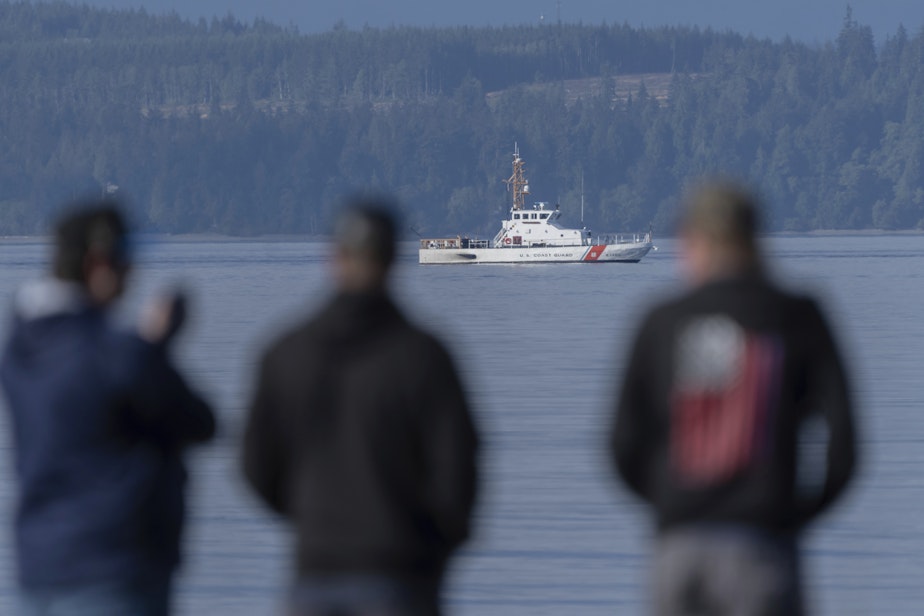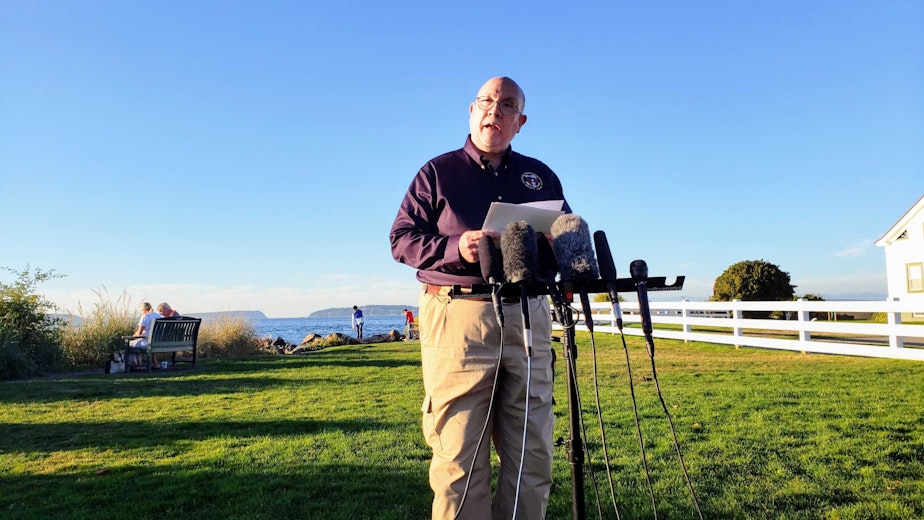What happened and why? Federal investigators begin search of seaplane wreckage

The National Transportation Safety Board said Tuesday that a team of investigators had arrived on Whidbey Island to begin investigating the cause of Sunday’s seaplane crash in Mutiny Bay.
Safety Board member Tom Chapman said investigators arrived on Monday, the same day the Coast Guard suspended its search for nine remaining passengers from the crash.
“NTSB is now directing the search for the aircraft wreckage,” Chapman said on Tuesday, “working with the Washington Department of Fish and Wildlife, which is providing sonar equipment and personnel to search Mutiny Bay.”
Investigations typically take 18 to 24 months to complete, Chapman said, but acknowledged this recovery is particularly uncertain.

“It's in deep water,” he said. “My understanding is the water is at least 100 feet deep and we don't know the condition of the aircraft. It may have broken up so we don't know what kind of wreckage we're looking at here or how widely it might be spread.”
Asked if the plane was equipped with a black box recording device, Chapman said they have no indication that it was and won’t know for certain until the wreckage is found.
Sponsored
Most planes the size of the DHC-3T Turbine Otter would have an emergency locator transmitter onboard, but so far Chapman said no beacon has been received. Even if this plane did have one, Chapman said one of the investigators believes the beacon is too deep to track it under water.
“This is an unusual situation under any circumstances,” Chapman said, “so we don’t have a lot of similar sorts of accidents that we can point to. But, I mean, it’s only been a couple days. Again, we feel pretty comfortable that we’ll be able to locate the wreckage.”
The safety board is an independent, federal agency that investigates civil aviation accidents, as well as significant railroad, highway, marine, and pipeline incidents.
The team on Whidbey Island is split into three groups looking into how the plane was operated, its structure, and mechanical/ electrical systems. They’ll collect maintenance records, pilot records, and training records from the operator. Investigators at NTSB headquarters in Washington, D.C., will gather weather and air traffic control information from the day of the crash.
Sponsored
“Our mission is to understand not just what happened,” Chapman said, “but why it happened and to recommend changes to prevent it from happening again.”
Ten people were on Sunday’s flight. One person was found dead by good Samaritans who rushed to the scene in boats shortly after the crash; the other nine passengers remain missing.




